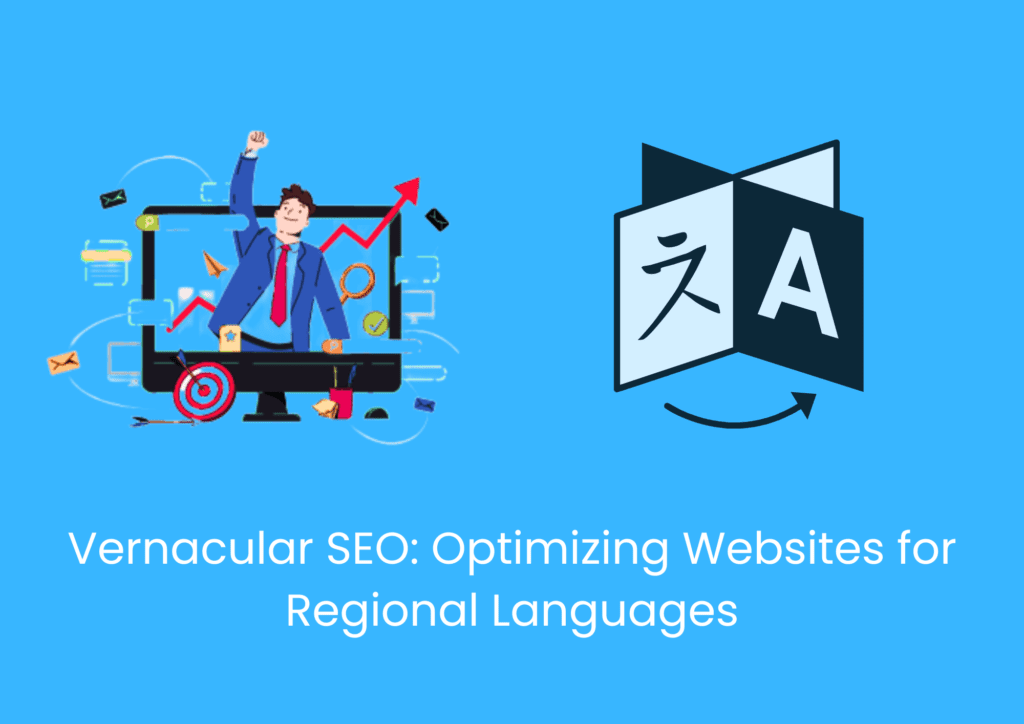
In today’s digital age, websites, and online content have become crucial components of businesses’ marketing strategies. This has led to a significant increase in the demand for search engine optimization (SEO) services to improve website visibility and drive traffic. However, many businesses overlook a significant aspect of SEO – vernacular optimization. Vernacular SEO refers to optimizing websites and online content for regional languages other than English.
With the majority of the world’s population speaking a language other than English, it makes sense for businesses to target these language groups. Vernacular SEO helps businesses reach a wider audience and tap into new markets by making their websites accessible and relevant to non-English speakers. Vernacular optimization also helps localize a brand’s message, making it more relatable and appealing to target audiences.
Why Vernacular SEO is Important?
Reach a Wider Audience: By optimizing websites for regional languages, businesses can reach a broader audience, including those who may not be fluent in English. This opens up new opportunities for growth and expands the reach of the brand.
- Better User Experience: Vernacular SEO helps create a more personalized and user-friendly experience for non-English speakers. This not only makes it easier for them to access and understand the website’s content, but it also makes them feel more valued and appreciated.
- Increased Relevance and Trust: Vernacular optimization makes a brand’s message more relevant and trustworthy to non-English speaking audiences. This is because people are more likely to trust and engage with websites that are in their native language.
- Improved Rankings: Google and other search engines prioritize websites that provide a high-quality user experience, including language relevance. Optimizing websites for regional languages can improve their rankings in local search results, making them more visible to target audiences.
How to Optimize Websites for Regional Languages
- Determine Target Languages: The first step in vernacular SEO is to determine the target languages. This is essential to ensure that the website is optimized for the most relevant languages and to reach the right audience.
- Translate Content: Translating the website’s content into the target languages is a crucial step in vernacular SEO. This includes all website pages, meta descriptions, and keywords. It’s important to use professional translators who are fluent in the target languages to ensure that the translations are accurate and culturally relevant.
- Use Regional Keywords: Keywords play a significant role in SEO, and the same applies to vernacular SEO. Research and use keywords that are relevant to the target language and region to improve website visibility in local search results.
- Localize URLs and Metadata: Localizing the website’s URLs and metadata, including page titles, descriptions, and headers, can also improve its visibility in local search results. This includes using local top-level domains (TLDs) and including the target language in metadata elements.
- Implement Hreflang: Hreflang is an HTML attribute that helps search engines understand the language and geographical targeting of a website. Implementing hreflang on a website can improve its visibility in local search results and prevent it from being penalized for duplicate content.
Wrapping-up
More and more people across the world come online, and there has been a growing demand for content in regional languages. In fact, studies suggest that the majority of internet users prefer to consume content in their native language. Vernacular SEO is an essential aspect of online marketing that should not be overlooked. With the majority of the world’s population speaking a language other than English, optimizing websites for regional languages can help businesses reach a wider audience, improve user experience, and increase relevance and trust. Implementing the steps outlined in this article can help businesses optimize their websites for regional languages and tap into new markets.







